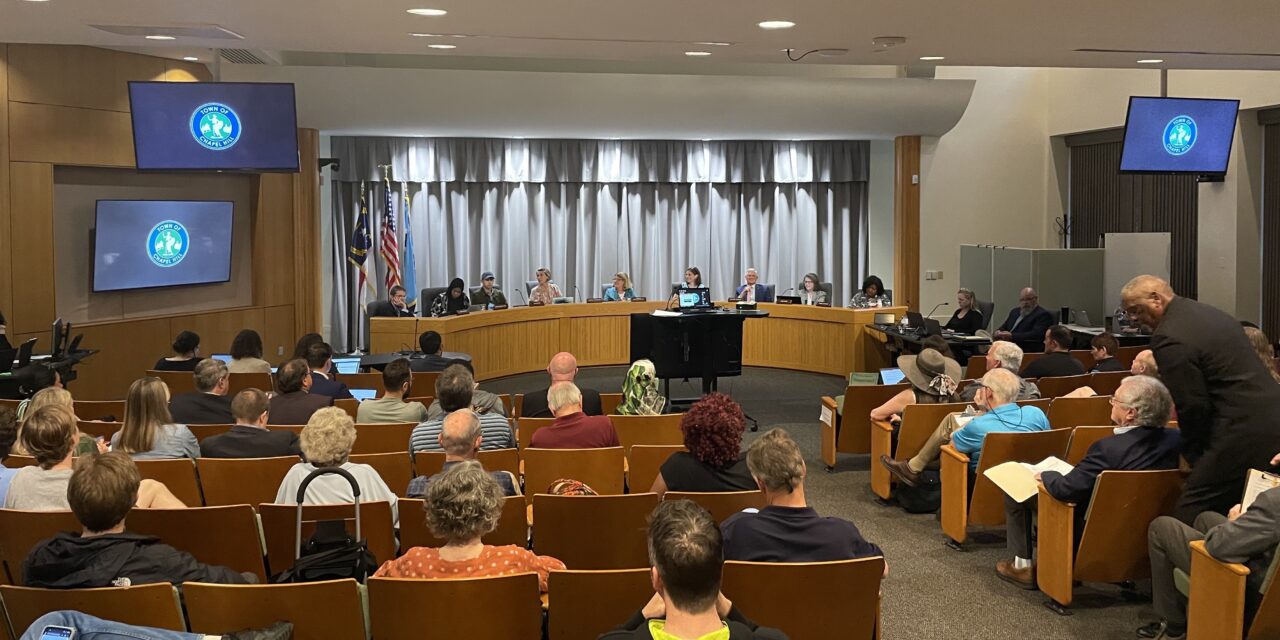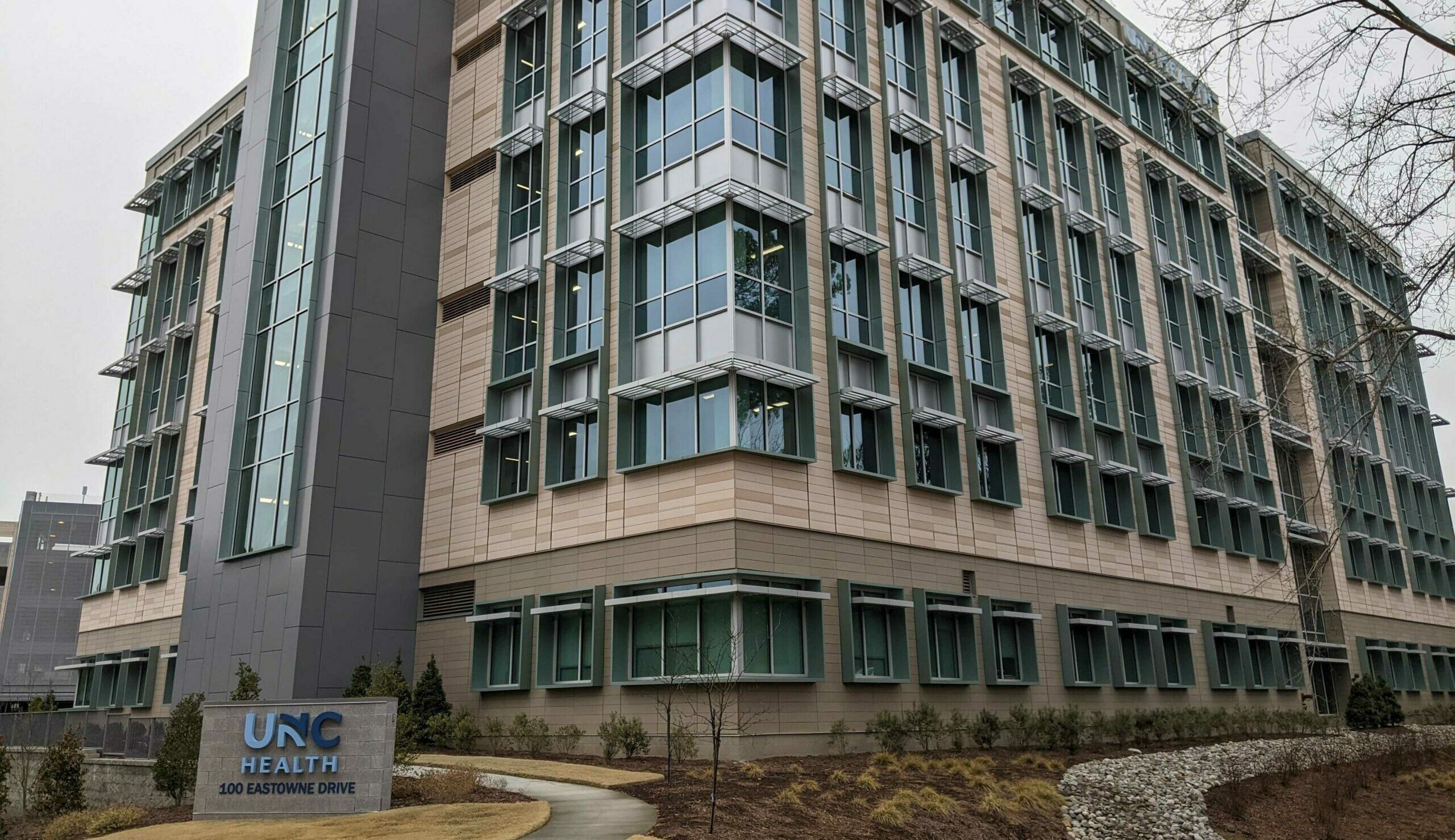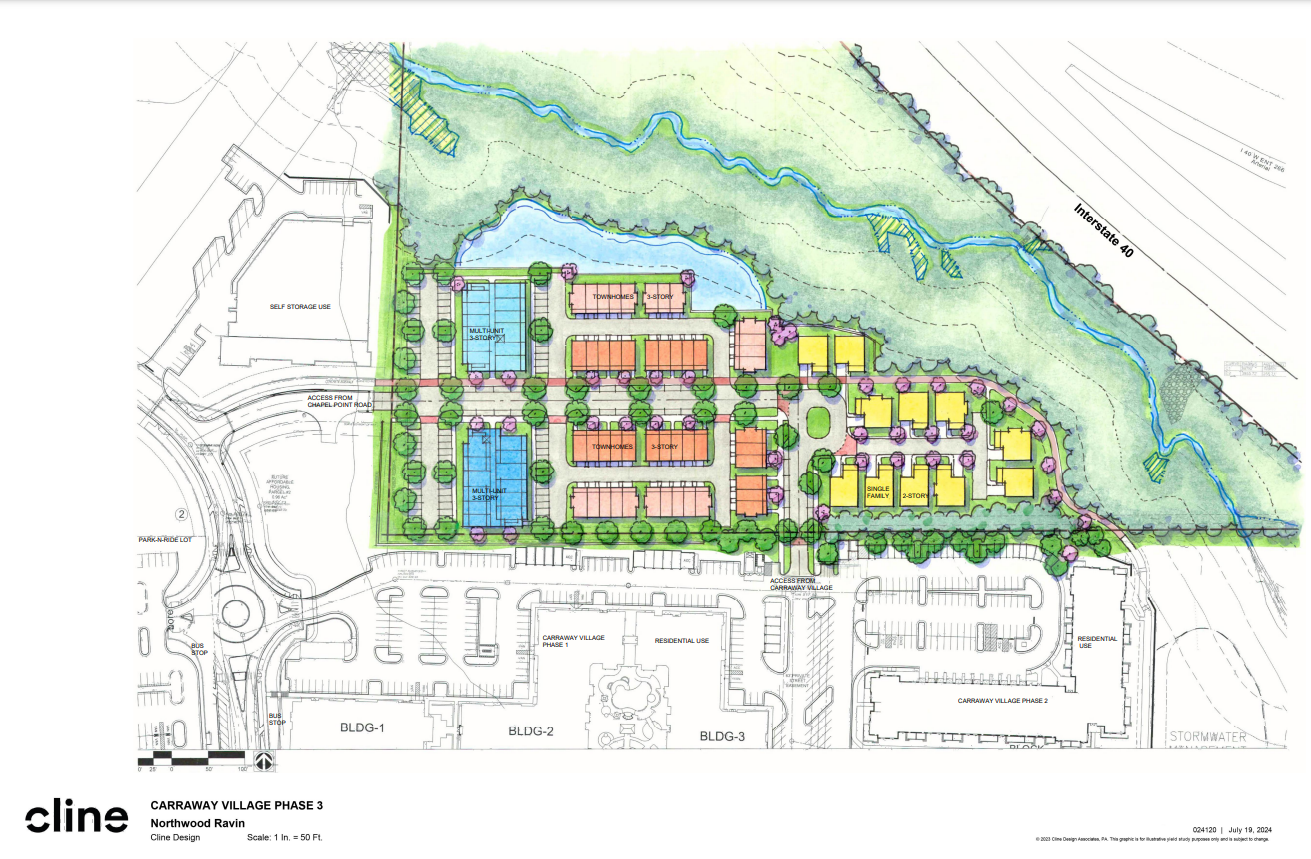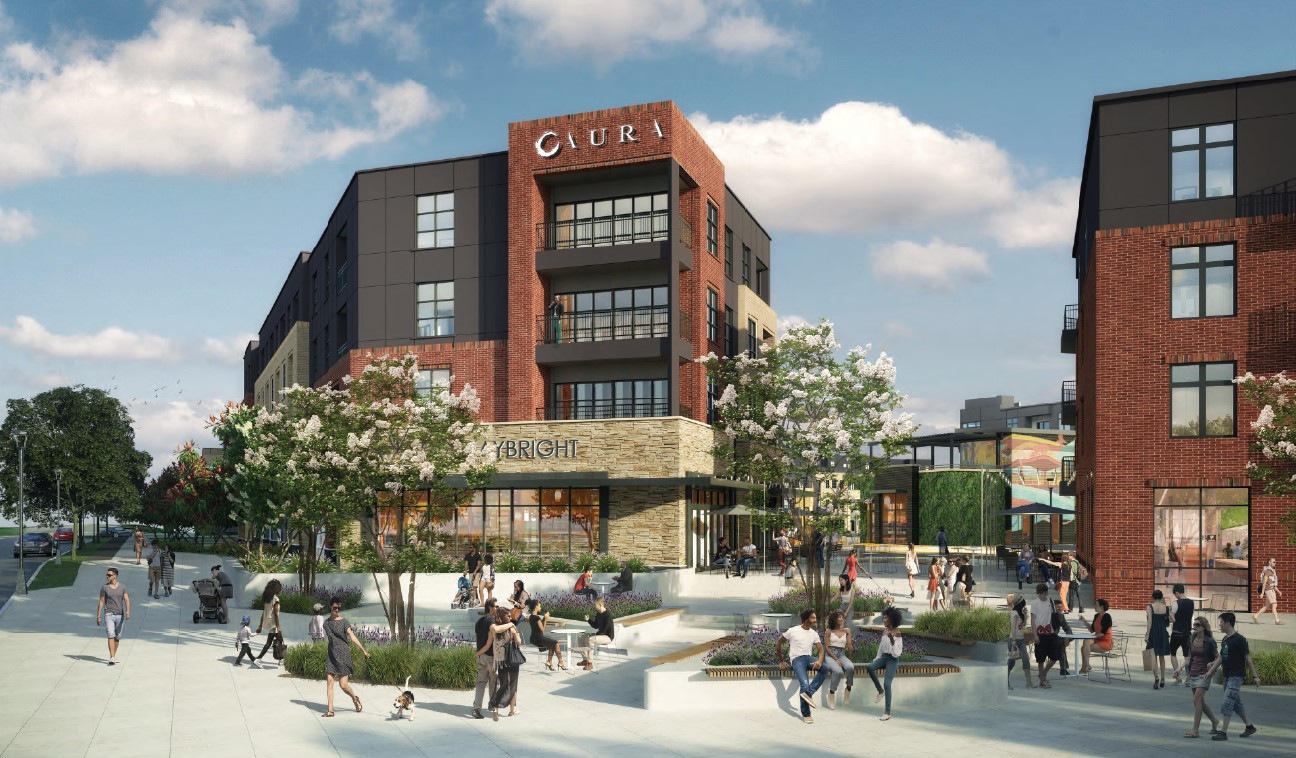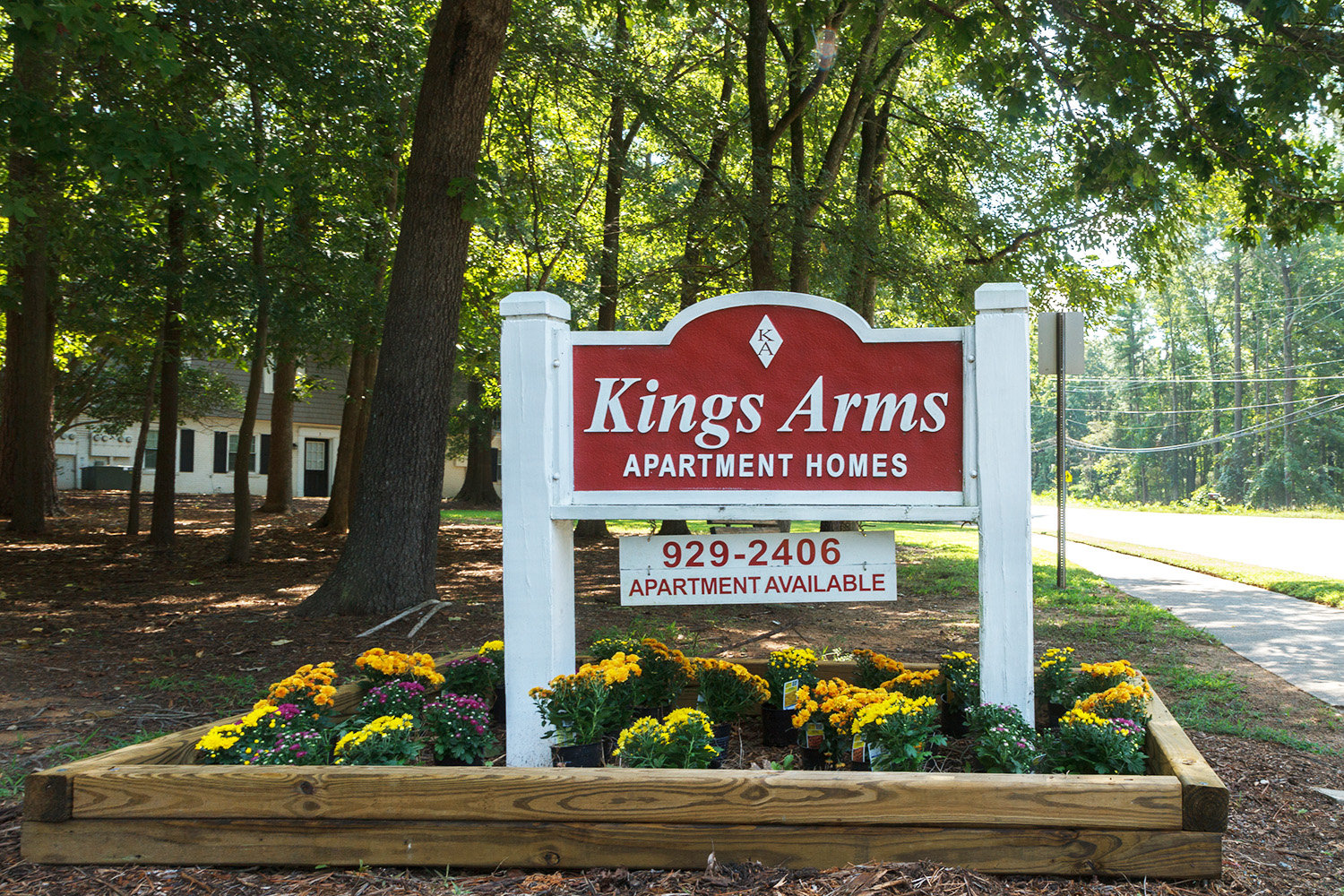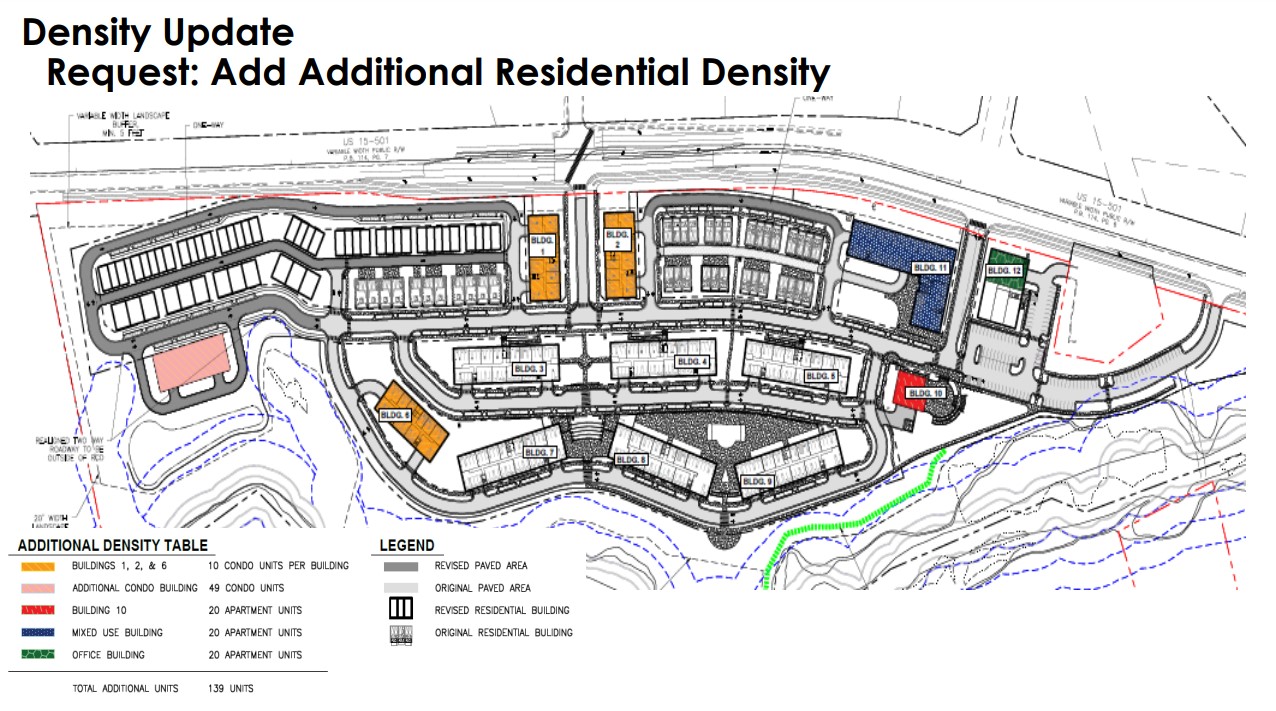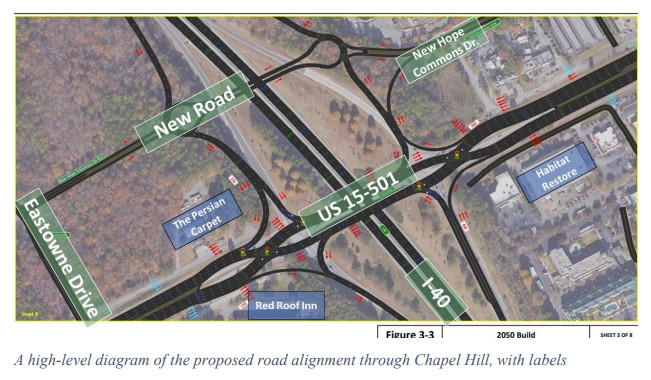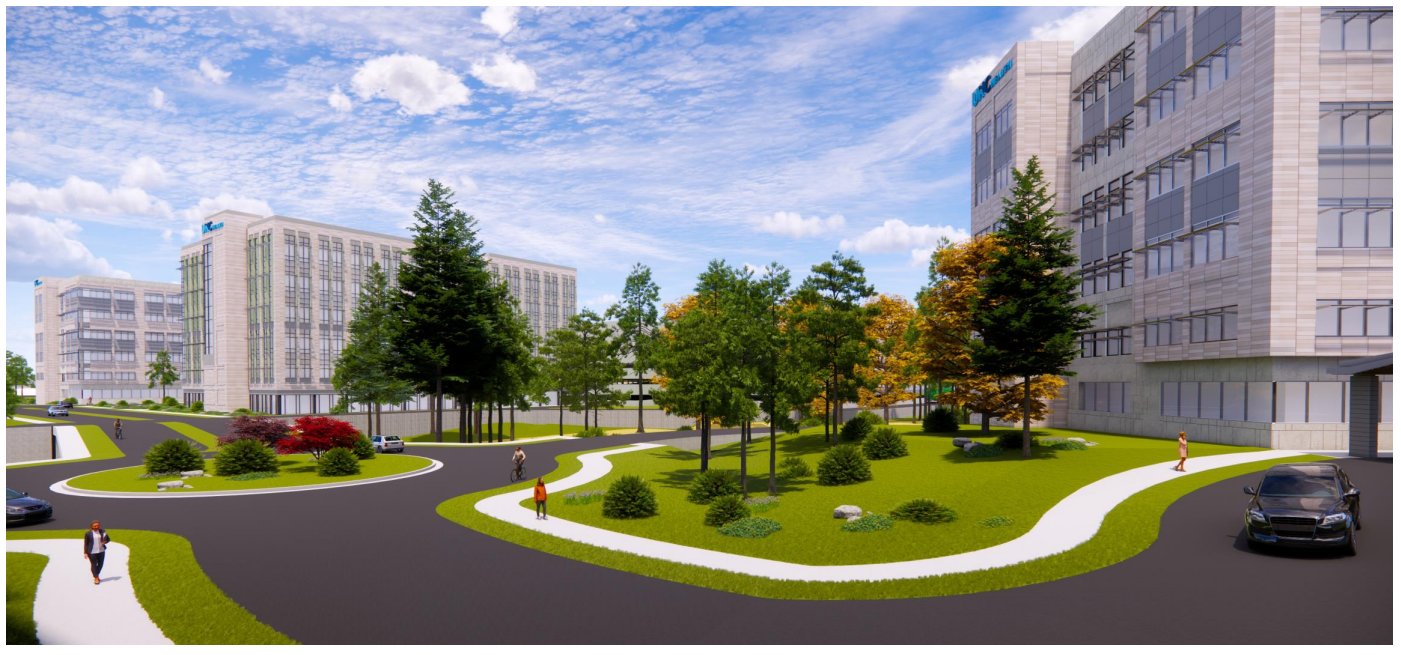The Chapel Hill Town Council approved two items during its meeting Wednesday night with the goals of ultimately improving housing diversity and inventory: one being changes to text amendments that included residential zoning and the other being a development project by UNC Health.
Council members voted 6-3 to approve tweaks to the town’s housing regulation laws, with the purpose of allowing more housing types to be built in single-family zoned areas – specifically accessory apartments, duplexes, or detached cottages. Council members Jessica Anderson, Tai Huynh, Paris Miller-Foushee, Michael Parker and Karen Stegman joined Chapel Hill Mayor Pam Hemminger in the affirmative vote.
Council member Adam Searing voted against it, citing his opposition to the change not being applied equally across the town and wishes to prioritize low-income housing. Council members Camille Berry and Amy Ryan also voted against the measure despite voicing support. Ryan cited her concerns of the new wording incentivizing student-only housing and a lack of initial protections for neighborhoods in Chapel Hill’s historic district.
Berry clarified that her concerns were the lack of a parking minimum of one vehicle for duplexes, which included in an amendment just before the final vote. The amendment eliminated a minimum parking space requirement for duplexes while keeping the maximum of four parking spaces — essentially maintaining the current standards in the town’s Land Use Management Ordinance (LUMO). Council members added it with the hope of ultimately decreasing residents’ use of cars, but Berry said she was opposed to it because it could exclude some residents who still rely on personal vehicles.
The measures were explored by town staff at request of council members following the adoption of the town’s Complete Community framework in December, which commits improving housing density, diversity, and supply. In their presentation ahead of the vote, town staff said the intention of the move is to also promote gentle density and encourage compatible infill in existing neighborhoods. The new types of housing would not be able to be built in neighborhoods with homeowners associations or established neighborhood conservation districts.
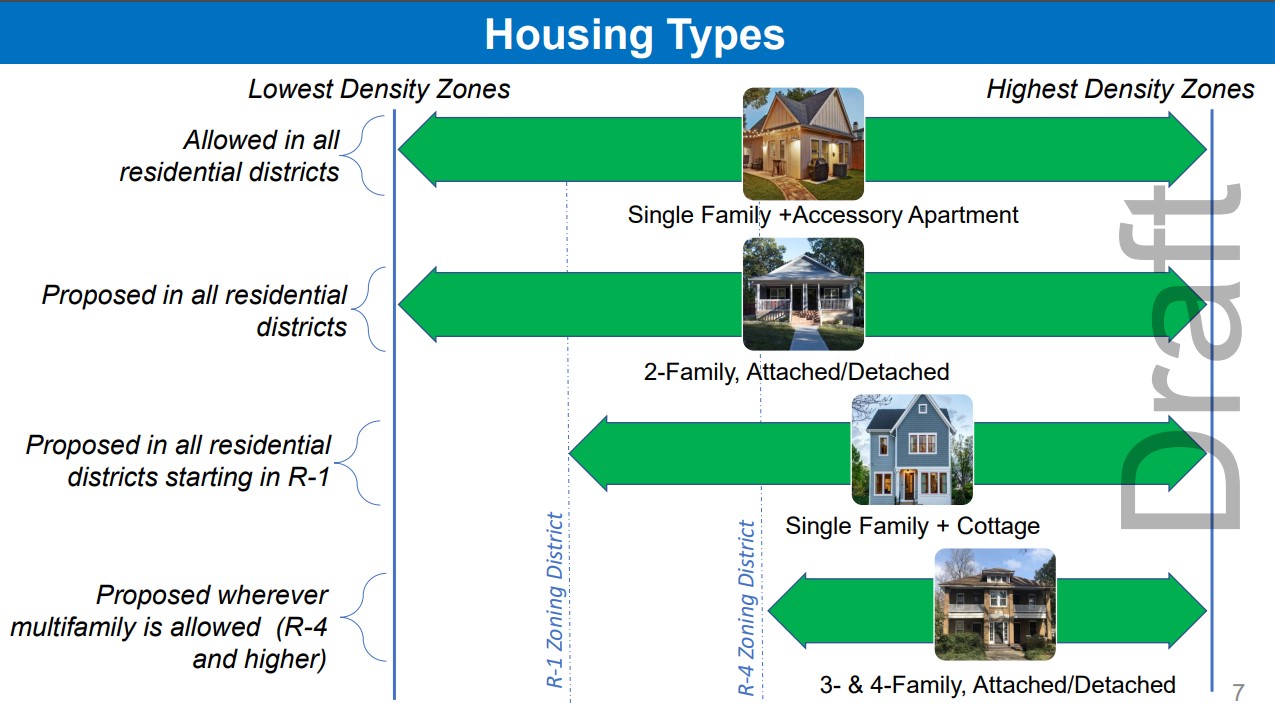
A draft slide from Town of Chapel Hill staff’s presentation to the town council on June 21, 2023, displaying what additional housing types will now be allowed based on changes to the Land Use Management Ordinance. (Photo via the Town of Chapel Hill.)
While the process and consideration drew the ire of many long-time homeowners, it also drew support from residents who shared about the challenges of finding housing options for low- to middle-income earners. Twenty community members spoke on Wednesday night as part of the pubic comment period, representing a fraction of those who weighed in since October on the issue in public forums or emails to council members.
Council Member Miller-Foushee cited some of these concerns during her comments ahead of the vote, saying the current regulations reinforce systemic exclusion of low-income households. She said approving the amendment means more opportunities for people of color, which she believes is reflected in the fear of change from some Chapel Hill residents.
“Our land use housing systems create enormous costs,” said Miller-Foushee, “which are disproportionally worn by vulnerable populations, low-income families, and Black and brown communities. That analysis has been done and those studies are very clear.
“The past’s common ideal of the American dream is stuck in the 1950s,” she added, “and we can no longer wall off access to the future. The goal of owning a low-density detached home isn’t financially feasible for many young workers, nor is it environmentally sustainable.”
Stegman echoed that sentiment in her comments, saying she has benefitted from the privilege afforded by systemic racism caused by the current zoning strategy. She said recognizing and addressing that is a critical way for Chapel Hill to move forward. The mayor pro tem also pointed to claims that the changes are to create profits for developers, saying her support of the amendment is instead about building a bigger housing index and adapting the regulations to fit with current needs.
“Will developers benefit? Possibly — if they’re good at their jobs, they’ll probably make a profit,” said Stegman. “Is that our goal? Of course not. This is about being the community that we aspire to be. Our housing supply is very, very constrained in this town. Having more housing will take pressure off of pricing over time. And whether the units are rented and sold, their value will be relative to neighboring properties.”
One issue the council was nearly unanimous on Wednesday night was moving forward with UNC Health’s proposal for development on its Eastowne campus. The health system aims to build eight to ten new medical office buildings on the land off Fordham Boulevard to pair with its existing Eastowne medical building and parking deck.
In May, UNC Health introduced a new layer to its proposal: a $5 million commitment to create an affordable housing loan fund. Town staff said such a contribution, added to with bank funding, could grow into tens of millions of dollars to fund new affordable housing units and subsidies.
On Wednesday, UNC Health also committed to reserving at least 12 acres of the nearby forest — anecdotally called the Northern 20 — which was an increase from its prior 10-acre offer in May. Many town council members continued to cite concerns about a potential parking deck on that portion of the land, but acknowledged the phase of the project as a “trade-off” for the expansion’s other benefits.
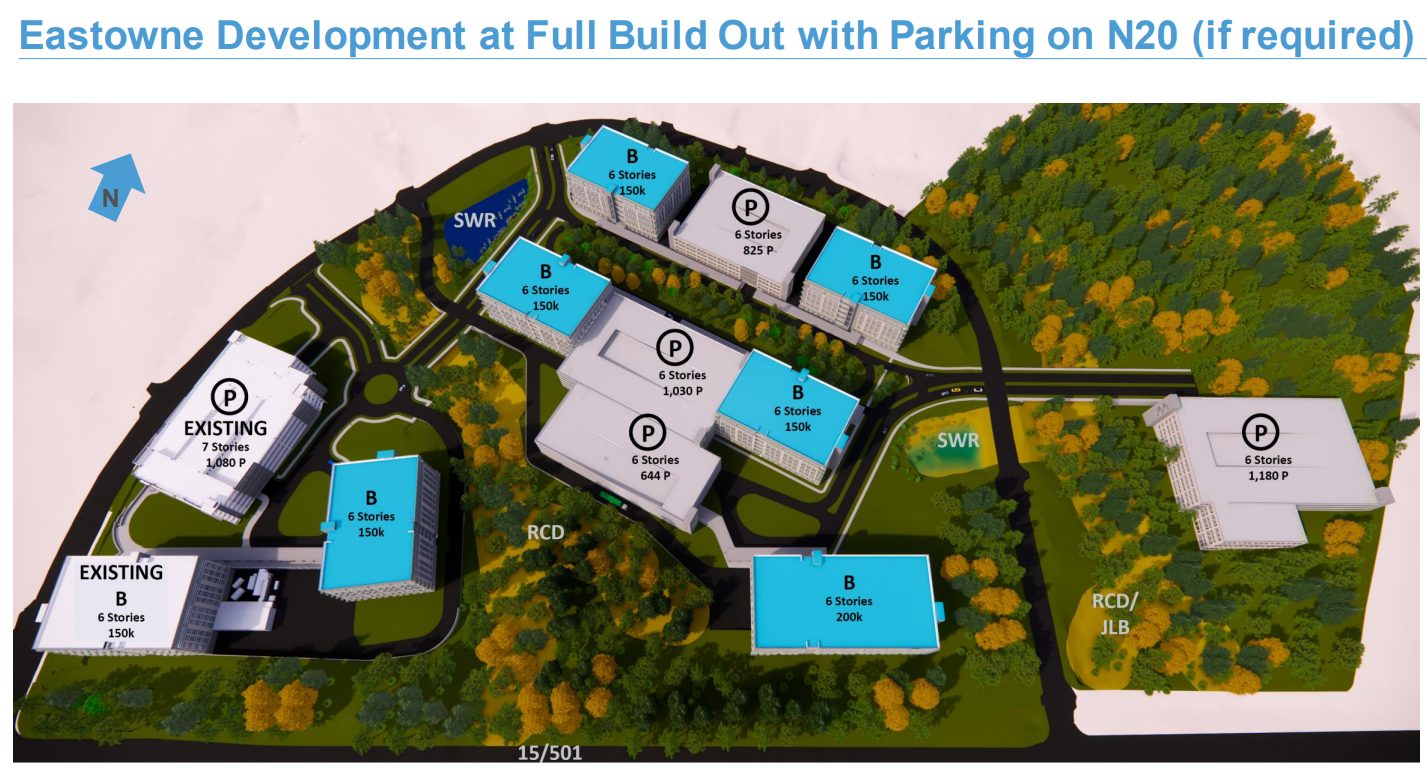
A rendering of UNC Health’s proposed Eastowne Development project as presented in May. The project will include constructing a parking deck on the hickory oak forest known as the Northern 20 (far right), although UNC Health committed to preserving at least 12 acres of the land and said the parking deck is in a long-term phase of development. (Photo via Town of Chapel Hill.)
Another change since the May consideration of the proposal is the future of U.S. 15-501 (Fordham Boulevard) and its exchange with Interstate 40. The North Carolina Department of Transportation unveiled a potential design for new traffic flow to the town on May 30, which includes new roads and exit ramps that cut into the property owned by UNC Health. Hemminger indicated that ahead of another meeting with NCDOT, the approval of the Eastowne project may affect the state’s plans to build through the forest.
Town Council members voted 8-1 to approve the conditional zoning application, with Searing being the lone vote against.
Parker said while conversations of the Eastowne campus have happened over the last five years, he appreciates UNC Health’s willingness to cooperate with some town requests and present revised plans over time.
“UNC has not only made an unprecedented financial contribution to affordable housing in our community,” he said, “but it’s also a first where UNC Health is acknowledging and exhibiting a willingness to work with the town on mutually solving an enormous problem…which is our affordable housing crisis.”
Anderson agreed that the benefits of expanding the medical campus is clear, but cited conflicting feelings about building a parking deck on part of the Northern 20 forest.
“We don’t own the property,” she ultimately pointed out. “It could be built on now. That’s the reality — it’s a not [one] that I like, but it is the reality of where we are. I think we’ve gotten to a better place: we have several more acres in conservation, we’re getting [the deck] closer to the road, so we’re protecting more [land]. I don’t think holding up this project, or having it go elsewhere, make any sense at this point.”
Chapelboro.com does not charge subscription fees, and you can directly support our efforts in local journalism here. Want more of what you see on Chapelboro? Let us bring free local news and community information to you by signing up for our biweekly newsletter.

